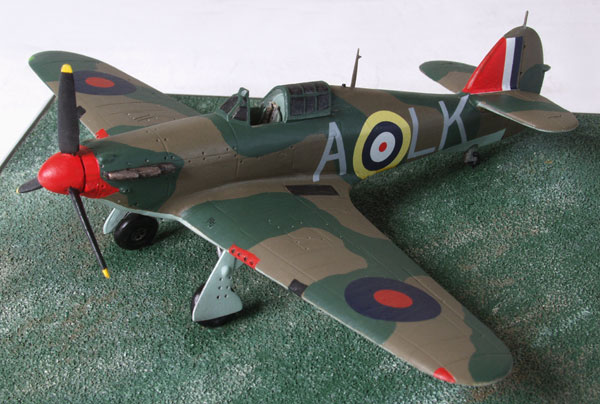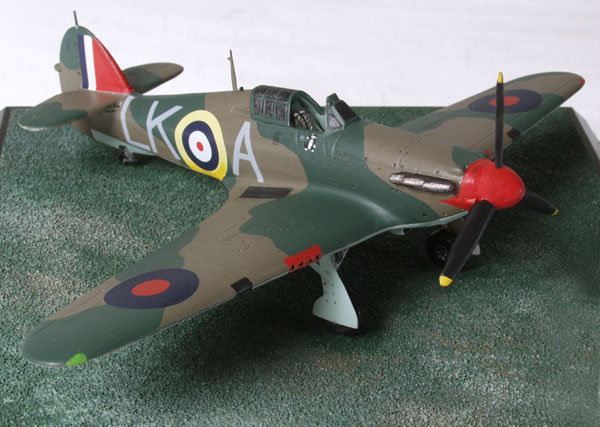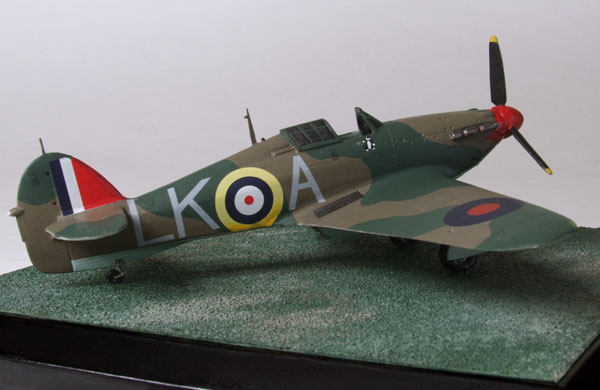Hawker Hurricane Mk I
Hawker Hurricane I P2798 LK-A
87 Squadron Flt Lt I R Gleed Exeter 1940
The design of the Hawker Hurricane Mk I was a logical development of Hawker’s Fury biplane interceptor; its embryo was conceived as the “Fury monoplane”, with very recognisable common elements, particularly in its structure of a steel tube frame with fabric covering, which came in to its own when battle damage needed to be repaired in 1940. The specification that led both to the Hurricane and to the Supermarine Spitfire was F.5/34, which called for a four-gun interceptor powered by the new Rolls-Royce PV.12 engine (later to be named the Merlin), and the proposed solution from both companies led to a further individual specification tailored to each design.
Hurricane Mk I P2798 was like so many Hurricanes, built by Gloster, one of 2,750 produced at their Hucclecote factory, emerging in March 1940; after work at 5 MU. It was flown out to France in mid-May to join 87 Squadron at Lille/Seclin. Its arrival coincided with that of its new ‘owner’, Flt. Lt. Ian ‘Widge’ Gleed, who was taking up the position of ‘A’ flight commander. Distinguished by its red spinner, it also carried on the starboard side below the cockpit a small black and white cat kicking a swastika; this cartoon character ‘Figaro’ stayed with Ian Gleed for the rest of his career. Before the squadron returned to England Gleed had scored five air-to-air victories and shared in two others, and during the Battle of Britain added another four and two probables. Promoted to command the Squadron in December 1940 he retained P2798 as his personal aircraft; with 87 taking on the night fighter role it had been painted all-black, with a red flash on its nose and what appears to have been a Squadron Leader’s pennant on its rudder. He replaced it with a Hurricane Mk II in August 1941, but P2798 stayed with 87 Squadron until it was lost when abandoned by its pilot over Gloucestershire during a night flight on 23 October 1941. Gleed went on to further success, and became OC 224 Wing flying Spitfires in the Western Desert; flying Spitfire Vc AB502/IR-G, still carrying his ‘Figaro’ mascot, he was shot down and killed on 16 April 1943.
Scale 1:72 Wingspan 6.67″ (169 mm)
Base size 6.37″ (162 mm) square (No. 4)
Weight not including base 9 ozs (252 grams)
Limited edition of 25 only
SOLD OUT




